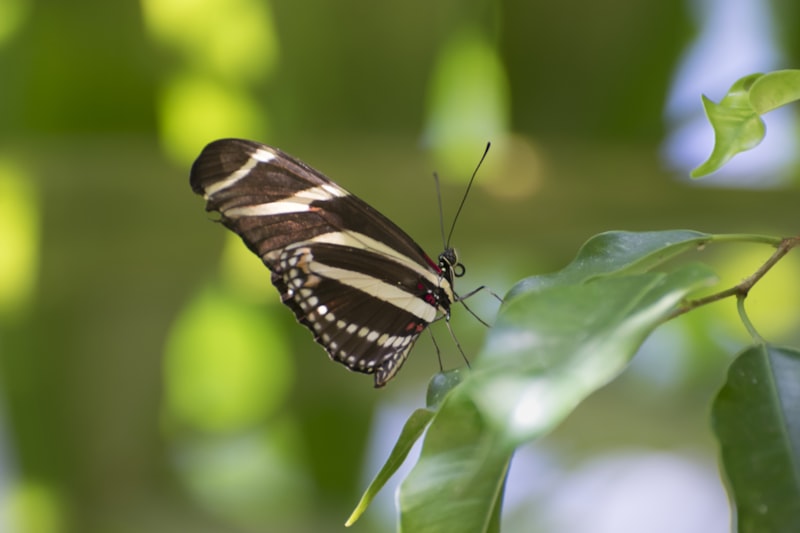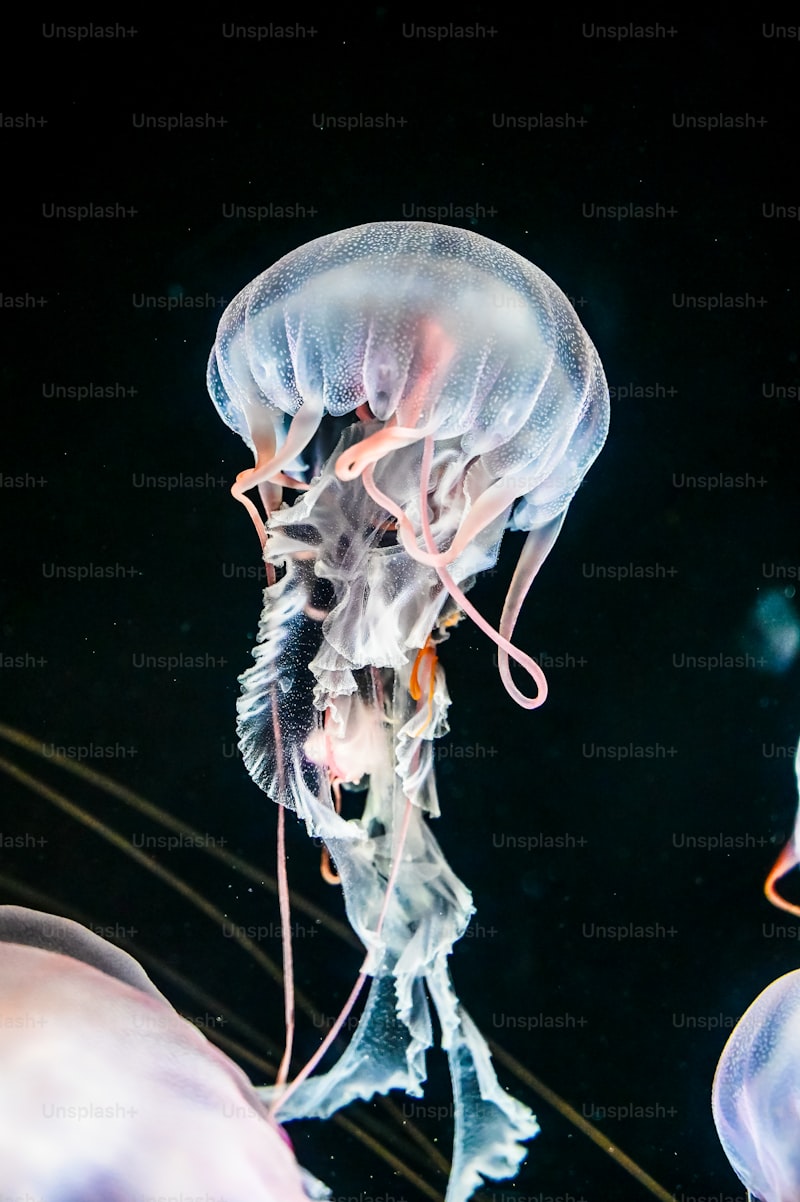Ever wondered how creatures in the depths of the ocean keep track of time? Dive into the fascinating world of circadian rhythms in marine invertebrates, where nature’s timekeepers are as diverse as they are intriguing.
Circadian rhythms are biological cycles that follow a roughly 24-hour pattern, influencing various physiological processes like sleep-wake cycles, hormone release, and even behavior. While often associated with terrestrial creatures, these rhythms are equally vital for marine invertebrates such as corals, crustaceans, and mollusks.
Imagine a bustling coral reef: amidst the vibrant colors and teeming life, corals maintain their own internal clocks. These tiny polyps, despite their stationary existence, exhibit daily patterns of activity and rest. Their rhythms not only synchronize with the day-night cycle but also respond to environmental cues like temperature and lunar phases.
Crustaceans, like crabs and lobsters, showcase a similar reliance on circadian rhythms. From foraging habits to mating behaviors, these creatures exhibit orchestrated routines governed by internal clocks. Even in the perpetual darkness of deep-sea trenches, where sunlight never penetrates, these rhythms persist, adapted to the rhythms of bioluminescent displays and other deep-sea phenomena.
Mollusks, known for their diverse adaptations, also adhere to circadian rhythms. Take the humble sea snail, for example. Its daily movements, feeding patterns, and reproductive cycles are all finely tuned by internal biological clocks. These rhythms ensure that vital activities occur at optimal times, enhancing survival and reproductive success in the ever-changing marine environment.
Understanding circadian rhythms in marine invertebrates isn’t just about biological curiosity; it has practical implications too. Conservation efforts, aquaculture practices, and even biomedical research benefit from insights into these rhythms. By studying how these creatures maintain their internal clocks, scientists gain valuable knowledge that could inspire new approaches in medicine, agriculture, and environmental management.
Circadian rhythms in marine invertebrates reveal a hidden world of timing and synchronization beneath the waves. From the bustling coral reefs to the darkest ocean depths, these rhythms shape life in ways that continue to astonish and inspire scientific inquiry.
Nature’s Timekeepers: How Marine Invertebrates Navigate Circadian Rhythms
Ever wondered how creatures beneath the ocean’s surface keep track of time? Marine invertebrates, from corals to mollusks, have their own built-in clocks known as circadian rhythms. These internal timekeepers play a crucial role in their daily lives, regulating everything from feeding to reproduction with remarkable precision.
Circadian rhythms are essentially 24-hour cycles that control biological processes in living organisms. They synchronize with the Earth’s day-night cycle, helping creatures anticipate and adapt to environmental changes. For marine invertebrates, these rhythms are not just a biological curiosity but a survival necessity in the ever-changing ocean environment.
Take the coral reefs, for example. Corals are tiny animals that form vast colonies and create the backbone of diverse ecosystems. Despite their stationary nature, corals are surprisingly active creatures, with their circadian clocks guiding behaviors such as feeding and spawning. By knowing the time of day, corals optimize their energy use and maximize their chances of successful reproduction.
Mollusks, another group of marine invertebrates, also rely heavily on circadian rhythms. From the majestic giant clams to the intricate chambered nautilus, these creatures exhibit behaviors that are timed to perfection. Their internal clocks help them open and close their shells at the right times, ensuring they stay protected from predators and conserve energy during periods of low light.

But how do these creatures know when it’s time to feed or reproduce? It’s all thanks to specialized cells within their bodies that respond to light and temperature changes. These cells, called photoreceptors, send signals to the brain or nervous system, signaling whether it’s day or night. This information then triggers a cascade of physiological processes that dictate their behavior.
In essence, marine invertebrates are nature’s timekeepers of the underwater world. Their ability to navigate circadian rhythms not only showcases their evolutionary adaptability but also highlights the interconnectedness of life in the oceans. Understanding these rhythms not only enriches our knowledge of marine ecosystems but also underscores the importance of conservation efforts to protect these delicate creatures and their habitats.
Next time you marvel at the wonders of the ocean, remember that beneath the surface, marine invertebrates are silently keeping time, orchestrating a symphony of life in perfect harmony with nature’s rhythms.
Undersea Clocks: Understanding Circadian Rhythms in Marine Life
Circadian rhythms are biological clocks that regulate the daily cycles of various physiological processes, including sleep-wake patterns, hormone release, and metabolism. While these rhythms are well-studied in terrestrial animals, understanding how they operate in marine organisms presents its own set of challenges and marvels.
In the depths of the ocean, where sunlight dims and pressure mounts, marine life adapts to a rhythmic dance dictated by these undersea clocks. Take, for instance, the humble coral reef. By day, vibrant colors of coral and fish abound as photosynthesis thrives under the tropical sun. But as twilight sets in, a different scene unfolds. Nocturnal creatures like lobsters and octopuses emerge, guided by their circadian rhythms to hunt and explore under the moonlit waves.
The precision of these undersea clocks isn’t just limited to larger creatures. Even microscopic phytoplankton, essential to oceanic food webs, follow their own circadian rhythms to optimize nutrient uptake and growth. This intricate timing ensures they flourish despite the constant flux of ocean currents and varying light availability.
Interestingly, the mechanisms behind these undersea clocks often mirror those found in terrestrial organisms. Light, or the lack thereof, plays a crucial role in resetting these clocks daily. Yet, marine life must contend with the added challenge of navigating through different layers of water that filter and scatter sunlight in unique ways.
Researchers continue to unravel the complexities of circadian rhythms in marine environments, seeking to understand how climate change and human activities may disrupt these delicate rhythms. By studying undersea clocks, scientists hope to better predict and mitigate the impacts of environmental changes on ocean ecosystems.
So, next time you find yourself by the shore, ponder the synchronized ballet of undersea clocks that governs life beneath the waves. From the smallest plankton to the mightiest whales, every creature plays its part in this timeless oceanic symphony.
Biological Tidekeepers: Circadian Rhythms Unveiled in Oceanic Creatures
Ever wondered how life under the sea keeps its beat? Enter the fascinating world of circadian rhythms in oceanic creatures – nature’s biological tidekeepers. These rhythms, ingrained in the very fabric of marine life, govern crucial biological processes with remarkable precision.
Picture this: as the sun rises and sets above the ocean’s surface, deep-sea dwellers like the lanternfish or the mesmerizing jellyfish aren’t merely drifting along. They’re synchronized to an internal clock that regulates their activities over a roughly 24-hour cycle. This biological timekeeping isn’t just about waking and sleeping; it dictates when to hunt, when to migrate, and even when to reproduce.
At the heart of these circadian rhythms are specialized cells and proteins that form an intricate network within an organism’s body. These tiny timekeepers respond not to the ticking of a clock but to environmental cues like light and temperature. Imagine them as conductors of an orchestra, orchestrating a symphony of biological processes that ensure survival in the vast, ever-changing seas.
Take the humble coral reef, for instance. By day, its inhabitants – from colorful fish to stealthy crustaceans – bustle with activity under the sun’s nourishing rays. As dusk settles, a different scene unfolds. Nocturnal predators emerge from their daytime hideouts, guided by their internal clocks to seize the cover of darkness for hunting.
But why does this matter beyond mere curiosity? Understanding circadian rhythms in oceanic creatures isn’t just about unraveling natural mysteries. It holds profound implications for human health and environmental conservation. Scientists are delving into these rhythms to grasp how disruptions, like those caused by climate change or human activities, impact marine ecosystems.
In essence, circadian rhythms in oceanic creatures aren’t just a quirk of biology; they’re a testament to nature’s ingenious adaptability. They remind us that beneath the waves lies a world where time isn’t merely a concept but a fundamental force shaping life itself. So next time you gaze at the ocean’s expanse, remember the hidden symphony of circadian rhythms that pulses beneath the surface, keeping the heartbeat of marine life alive and thriving.
Adapting to the Tides: The Intricate Dance of Circadian Rhythms in Marine Invertebrates
Just like a ballet troupe, marine invertebrates such as crustaceans, mollusks, and echinoderms have mastered the art of timing. They anticipate the rising and falling tides, adjusting their activities accordingly. As dusk settles and dawn breaks, their bodies respond to cues embedded in their genetic makeup, signaling when to feed, reproduce, or seek shelter.

Picture a hermit crab scuttling along the shore, its movements timed to coincide with the safety of submerged rocks during high tide. Or a starfish, methodically patrolling a reef under the gentle glow of moonlight, guided by its internal clock that dictates when to hunt for prey. Even microscopic organisms like plankton exhibit rhythmic behaviors, rising from the depths with the cover of darkness to avoid predators.
These rhythms are not just about survival; they are about thriving in a world shaped by the relentless rhythm of the ocean. Each wave that crashes upon the shore carries with it a reminder of the cyclical nature of life underwater. Marine invertebrates have adapted over millennia, honing their biological timekeeping mechanisms to stay in harmony with their watery environment.
Scientists marvel at the precision of these internal clocks, studying how they remain synchronized even in the absence of external cues. It’s as if these creatures possess an innate wisdom, understanding the importance of timing in a world governed by the gravitational pull of celestial bodies.
Secrets of the Deep: How Circadian Rhythms Drive Life Below the Surface
Picture this: deep below the waves, where sunlight struggles to penetrate, creatures ranging from the smallest plankton to the largest whales adhere to a strict schedule set by their internal clocks. Just as we humans wake and sleep in sync with the rising and setting of the sun, marine life dances to the tune of its own biological rhythms.
Circadian rhythms govern a multitude of behaviors and functions among ocean dwellers. For instance, many fish species time their feeding patterns to coincide with the upward movement of nutrient-rich waters during the night. This ensures they make the most of their hunting opportunities while avoiding predators that may lurk during daylight hours.
Beyond basic survival, circadian rhythms influence complex processes like reproduction and migration. Coral reefs, often referred to as the bustling cities of the sea, synchronize their spawning events based on lunar cycles, which are intricately linked to circadian rhythms. This coordination ensures that coral larvae have the best chance of survival in the vast ocean currents.
In the depths where light never reaches, bioluminescent organisms put on dazzling displays that follow a nightly rhythm. These creatures, from tiny bacteria to mesmerizing deep-sea jellyfish, produce light patterns that can be timed down to the minute, showcasing the precision of their internal clocks.
Even the ocean’s giants, like whales and sharks, adhere to circadian rhythms. They regulate their body temperatures and conserve energy by diving to cooler depths during the day and surfacing at night to feed in warmer waters, mirroring the rhythm of their prey.
Frequently Asked Questions
How do scientists study circadian rhythms in marine invertebrates?
Learn how scientists study circadian rhythms in marine invertebrates, exploring methods such as light manipulation experiments and genetic analysis to understand how these organisms’ biological clocks synchronize with environmental cues.
Why are circadian rhythms important for marine invertebrates?
Learn why circadian rhythms are crucial for marine invertebrates, influencing behaviors like feeding, reproduction, and predator avoidance, ensuring optimal survival and adaptation to their oceanic environment.
How do marine invertebrates regulate their circadian rhythms?
This FAQ provides a concise explanation on how marine invertebrates regulate their circadian rhythms. It covers the mechanisms these organisms use to synchronize their biological processes with daily environmental changes, highlighting adaptations such as light-sensitive proteins and internal molecular clocks.
What factors influence circadian rhythms in marine invertebrates?
Factors influencing circadian rhythms in marine invertebrates include environmental cues like light and temperature changes, genetic mechanisms regulating internal clocks, and ecological adaptations to tidal and seasonal variations.
What are circadian rhythms in marine invertebrates?
Learn about circadian rhythms in marine invertebrates, their biological rhythms that synchronize with daily environmental changes, affecting behaviors, feeding patterns, and reproduction cycles.


